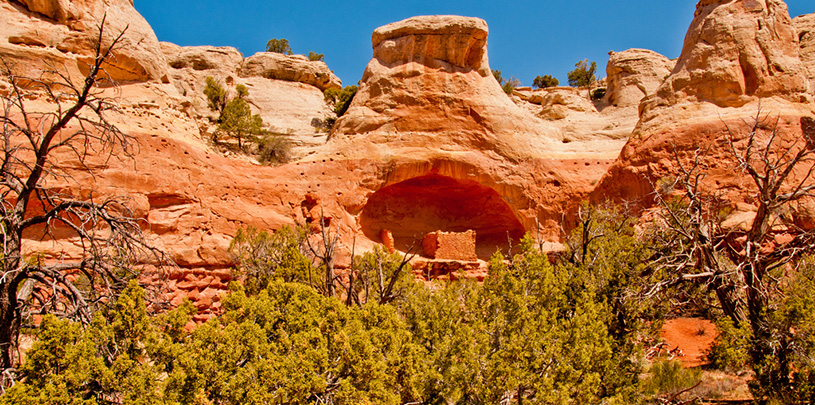
 by Mary O'Brien, Utah Forests Director
by Mary O'Brien, Utah Forests Director
Canyons of the Ancients National Monument, located in southwestern Colorado, boasts one of the highest known densities of archaeological sites in the nation. With more than 5,000 recorded sites—pueblos , kivas, springs, prehistoric agricultural fields—thousands more lie undiscovered. The BLM is considering opening this outdoor museum to cattle grazing, and we need your help to convince them otherwise.
On MONDAY, November 23, the scoping period ends for a proposal to allow cattle to graze in two desert tumbleweed-choked allotments in Canyons of the Ancients National Monument after a 10-year hiatus. Please consider sending a comment to the BLM, encouraging them to support the Sustainable Grazing and Recovery Alternative submitted by the Grand Canyon Trust, Great Old Broads for Wilderness, and Western Watersheds Project. Take a look at some photos of the allotments here.
In March 2015, eagle-eyed Rose Chilcoat, Associate Director of Great Old Broads for Wilderness, sprung into action after reading a tiny notice in the Durango Herald. The ad invited ranchers to apply for permits to run cattle in two allotments (Yellow Jacket and Flodine Park) in the monument, which hadn’t been grazed for 10 years except by trespassing horses.
The rancher who previously held the permits to run cattle in those two allotments had quit grazing there in 2005. Rather than change grazing practices to meet the minimal BLM “Rangeland Health Standards,” the rancher decided to move his cows to greener pastures.
Ten years passed, and then in March 2015, the note appeared in the Durango Herald. With thousands of archaeological sites already recorded, sparse vegetation, a Russian olive invasion along the few creeks, and thousands of grazing-damaged acres covered by cheatgrass and tumbleweed, Rose didn’t think sending cattle back into the two allotments made sense.

(Young Russian olive growing along Yellowjacket Creek—it's not too late for restoration rather than cows!)
By early August, Advocates for the West filed a formal complaint on behalf of seven conservation groups and a professor to protest the BLM’s plan to reintroduce cattle without assessing conditions and options after 10 years of no cattle. The BLM agreed to do a new analysis and environmental assessment. And that’s where you come in.
The Trust, Great Old Broads, and Western Watersheds have submitted a Sustainable Grazing and Recovery proposal to the BLM:
Read the entire proposal on pages 8-11 of the scoping comments, which also discuss why these changes can and should be made by the BLM.
It’s short notice before the scoping period officially ends November 23, but your comments a few days later would still be accepted.
As 2024 draws to a close, we look back at five maps we created this year that give us hope for 2025.
Read MoreThe new Grand Canyon national monument allows traditional uses like hunting and ranching to continue.
Read MoreYou have the opportunity to comment on how you think some of the most beautiful landscapes in Utah should be managed for the next generation to come.
Read More